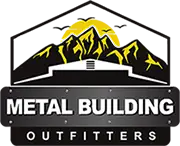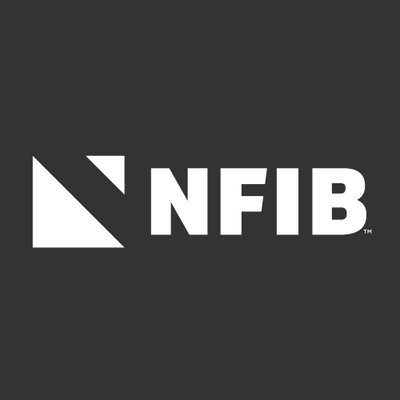
Contents
Imagine a fortress standing tall against the elements, safeguarding your livestock with unwavering strength. You might wonder what makes durable metal structures the preferred choice for modern farming. These buildings don’t just offer shelter; they’re engineered to enhance the well-being of your animals while minimizing maintenance efforts. But what exactly are the features that set them apart, and how can they transform your farming operations? Exploring these aspects reveals more than just construction; it uncovers a strategic investment in your livestock’s future.
Key Takeaways
- Durable metal structures for livestock include barns, shelters, and clear-span buildings that offer ample space and strong support for animal movement.
- These structures are designed with weather-resistant features, ensuring protection from harsh conditions like heavy rain, snow, and wind.
- Metal buildings provide easy maintenance thanks to smooth surfaces and effective drainage systems, reducing upkeep efforts and costs.
- Customization options like material selection and design layouts allow for tailored solutions that meet specific livestock needs.
Benefits of Metal Structures
When considering livestock housing, you’ll find that metal structures offer significant advantages over traditional building materials. One of the foremost benefits is their durability. Metal can withstand harsh weather conditions, reducing the need for frequent repairs or replacements. This longevity translates to lower overall costs, making it a financially sound choice for farmers.
Additionally, metal structures align well with sustainability practices. They often incorporate recyclable materials, which minimizes waste and supports a circular economy. Choosing metal benefits your operation and contributes to reducing your environmental impact, a vital consideration in today’s farming landscape.
Furthermore, metal’s inherent properties support effective ventilation and temperature control, which are essential for maintaining animal health and productivity. This efficiency can lead to an optimized environment for livestock, directly impacting their growth and overall well-being.
You’ll also appreciate the speed of construction when opting for metal. These structures can be erected quickly, allowing you to get your livestock housed without unnecessary delays. This is particularly beneficial during peak seasons when time is of the essence.
Types of Durable Metal Buildings
Durable metal buildings come in various types, each designed to meet specific needs for livestock housing. Understanding the different metal building types can help you choose the right structure that aligns with your operational goals.
One of the most common types is the metal barn, which provides ample space for housing livestock such as cattle or horses. These barns typically feature high ceilings and wide openings, making it easier to accommodate equipment and facilitate movement.
Another option is the livestock shelter design that incorporates enclosed areas for breeding or nursing. These structures often have insulated walls to maintain a stable temperature, ensuring the well-being of young animals.
You might also consider the clear-span building type, which maximizes interior space without the need for support columns. This design is particularly advantageous for those looking to optimize the layout for feeding, grooming, or veterinary care.
Additionally, some metal structures are designed for specific climates, featuring enhanced ventilation systems or weather-resistant materials to withstand harsh conditions.
Lastly, modular metal buildings offer flexibility. These structures can be expanded or modified as your livestock needs change, making them a smart long-term investment.
Design Features for Livestock
When designing metal structures for livestock, you must prioritize strength and stability to withstand heavy use and animal movement.
Weather resistance is essential to protect your investment from harsh elements while ensuring a safe environment for your animals.
Additionally, easy maintenance features will save you time and resources, allowing you to focus on livestock care rather than constant repairs.
Strength and Stability
A robust design ensures the strength and stability of metal structures used in livestock management. When you’re selecting materials, consider their load-bearing capacity; structures must support the weight of livestock and equipment without compromising safety. Steel, for instance, offers excellent tensile strength and durability, making it a preferred choice.
Your design should focus on achieving ideal structural integrity. This means considering the weight supported and the overall framework. Reinforced beams and welded joints can greatly enhance stability, reducing the risk of collapse under stress.
Additionally, proper bracing techniques can distribute loads evenly, minimizing the risk of structural failure.
It’s essential to evaluate the intended use of the structure, as different livestock species may require various space configurations. This tailored approach ensures that your metal structure will function effectively, accommodating the unique needs of your livestock while maintaining safety and reliability.
Weather Resistance
Designing metal structures for livestock also requires a keen focus on weather resistance. You need to ensure these structures can withstand various environmental challenges, including heavy rainfall, snow, and strong winds.
Storm resistance is essential; the design must incorporate features that prevent water accumulation and structural damage during severe weather events.
Choosing high-quality, rust-resistant materials is fundamental. These materials enhance durability and contribute to the overall longevity of the structure.
Additionally, incorporating sloped roofs and proper drainage systems will help mitigate potential water damage.
Thermal insulation is another significant consideration. Livestock are sensitive to extreme temperatures, so making sure your structure maintains a stable internal environment is critical.
Insulated walls and roofs can help regulate temperature, keeping your livestock comfortable year-round. This not only promotes animal welfare but can also lead to improved productivity.
Ultimately, focusing on weather resistance through effective design and material choices will create a safe, reliable environment for your livestock.
Easy Maintenance
Efficiency in maintenance is essential for the longevity of metal structures housing livestock. You’ll find that choosing metal enhances durability and simplifies upkeep. These structures typically feature smooth surfaces that minimize dirt accumulation, making your cleaning routines quicker and more effective.
Routine inspections play an important role in maintaining the integrity of your livestock facilities. By regularly checking for rust, loose connections, or any signs of wear, you can address issues before they escalate, ensuring a safe environment for your animals.
Metal buildings often come with pre-drilled holes, making modifications and repairs straightforward, which can save you both time and resources.
Additionally, consider incorporating drainage systems in your design. Proper drainage prevents water buildup, reducing the risk of corrosion and simplifying your cleaning routines.
With the right design features, you can create a space that supports the health and safety of your livestock and fosters a sense of community among those who work within it.
Customization Options Available
When considering durable metal structures for livestock, you’ll find a range of customization options that cater to your specific needs.
You can select from various materials, adjust the design layout for ideal functionality, and include accessory add-ons to enhance the structure’s utility.
These choices empower you to create a facility tailored to your livestock operations.
Material Selection Choices
Choosing the right materials for durable metal structures in livestock operations is essential for ensuring longevity and functionality. When selecting materials, you need to take into account their properties, such as corrosion resistance, strength, and weight.
Steel, for instance, is a popular choice due to its high tensile strength and ability to withstand harsh environmental conditions.
Additionally, the fabrication techniques you choose can greatly influence the performance of the structures. Techniques like welding, bolting, or riveting can enhance the integrity of the assembly, depending on your specific needs.
For example, welded joints may provide a more seamless and rigid structure, while bolted connections allow for easier disassembly and modifications.
You also have options in coatings and treatments, which can improve material properties. Hot-dip galvanization protects against rust, extending the lifespan of your metal structures.
Furthermore, customizations like pre-engineered components can streamline construction and ensure that the materials meet your operational requirements.
Design Layout Flexibility
The selection of durable materials lays the groundwork for effective design layout flexibility in metal structures for livestock. This flexibility allows you to tailor your facilities according to specific operational needs, enhancing both layout optimization and spatial efficiency.
By utilizing modular designs, you can easily adjust the configuration of stalls, feed areas, and storage spaces, ensuring that every square foot serves a purpose. You can customize these layouts to accommodate various livestock types, whether you’re managing cattle, sheep, or poultry.
This adaptability is essential for maximizing productivity while maintaining the well-being of your animals. The structural integrity of metal ensures that these customizations remain stable and reliable over time.
Moreover, the integration of advanced design software can facilitate planning and visualization, allowing you to experiment with different arrangements before implementation. This proactive approach enables you to foresee potential challenges and make informed decisions that enhance operational flow.
Ultimately, embracing design layout flexibility promotes operational efficiency and fosters a sense of community among your livestock. When your facilities reflect your unique needs, it reinforces your commitment to best practices in livestock management.
Accessory Add-On Options
To enhance the functionality of your durable metal structures for livestock, accessory add-on options provide a range of customization opportunities tailored to your specific needs.
These enhancements can markedly improve both the efficiency and comfort of your operations.
One essential add-on is accessory storage, which allows you to keep tools, feed, and equipment organized and easily accessible. Incorporating dedicated storage solutions minimizes clutter, ensuring that you can maintain a safe and efficient working environment.
Additionally, integrating advanced ventilation systems can optimize air quality within your structures. Proper ventilation keeps your livestock comfortable and reduces the risk of respiratory issues.
You can choose from a variety of ventilation solutions, including exhaust fans, roof vents, and sidewall openings, allowing you to tailor airflow to your specific climate conditions.
Maintenance and Longevity
Proper maintenance of durable metal structures can considerably extend their lifespan and functionality. To achieve this, you’ll want to implement effective preventive maintenance strategies that focus on identifying and addressing issues before they escalate. Regular inspections are key; check for signs of corrosion, structural wear, and loose fittings. By catching these problems early, you can save yourself from costly repairs down the road.
In addition to routine inspections, consider developing longevity strategies tailored to your specific structure. This could involve applying protective coatings to prevent rust or using specialized cleaning methods to remove debris that can cause deterioration. When you maintain a clean environment around your metal structures, you enhance their appearance and their durability.
Don’t overlook the importance of proper drainage around your structures. Water accumulation can lead to rust and structural failure, so ascertain that gutters and downspouts are functioning correctly. You might also want to schedule seasonal maintenance checks to adapt your strategies based on changing weather conditions.
Lastly, engaging your team in the maintenance process fosters a sense of belonging and shared responsibility. Encourage everyone involved to be vigilant and report any issues immediately.
When you prioritize maintenance and longevity, you protect your investment and create a sustainable environment for your livestock. By adopting these practices, you can ascertain that your durable metal structures will serve you well for years.
Cost-Effectiveness of Metal Solutions
Cost-effectiveness remains an essential consideration when evaluating metal solutions for livestock structures. By conducting a thorough cost comparison, you can make informed decisions that yield long-term savings. Metal structures offer durability and reduced maintenance needs, translating to lower overall costs over time.
When considering metal solutions, focus on these key factors:
Initial Investment: Analyze the upfront costs versus potential longevity.
Maintenance Requirements: Assess how metal structures minimize ongoing upkeep expenses.
Energy Efficiency: Consider the insulation properties that can reduce heating and cooling costs.
Resale Value: Evaluate how durable metal structures retain value compared to traditional materials.
Insurance Premiums: Look into potential savings on insurance due to lower risk factors associated with metal buildings.
You’ll find that while the initial investment might be higher compared to other materials, the long-term savings can greatly outweigh those costs. The reduced need for repairs and replacements, coupled with energy efficiency, enhances the overall value of metal solutions.
Additionally, with a solid understanding of the cost comparison, you can confidently present your findings to stakeholders, reinforcing the practicality of your choice.
Final Thoughts
Durable metal structures for livestock serve as a fortress for your animals, combining strength and efficiency. They stand resilient against the elements while offering customizable features tailored to your needs. With minimal maintenance and long-lasting durability, these buildings provide a cost-effective solution for modern farming. Investing in metal structures enhances your livestock’s welfare and optimizes your operational productivity, ensuring that your farm thrives in any climate.
Recent Posts
What Are Affordable Metal Garage Options for Farms?
Imagine you’re managing a bustling farm like Smith’s Acres, where every inch of space counts.
What Are Your Options for Agricultural Metal Storage?
When you’re exploring agricultural metal storage options, it’s crucial to take into account the various
How to Choose Versatile Agricultural Metal Structures
When you’re considering versatile agricultural metal structures, it’s essential to start by evaluating your specific




